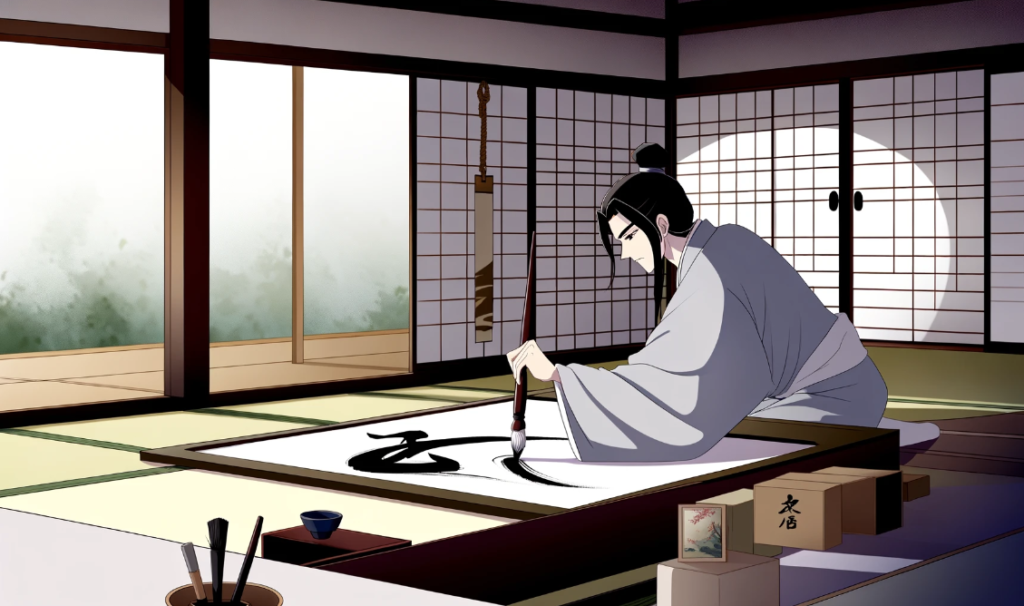
Lesson 14. Calligraphy (書道)
Topic Question: What role does calligraphy play in Japanese culture?
No. 1
First, try answering the question yourself.
The instructor will provide advice on vocabulary, grammar, and expression corrections.
Sample Answer – Let’s read aloud – The instructor will check your pronunciation and accent.
In Japanese culture, calligraphy, or “shodo,” is more than just a way of writing; it’s considered an art form and a spiritual practice. It involves the careful and expressive use of brush and ink to create characters that are not only aesthetically pleasing but also convey deep meaning. Calligraphy plays a significant role in Japanese society, being an essential part of education and a revered art that reflects the writer’s discipline, character, and aesthetic sense. It is used in various aspects of daily life, from traditional ceremonies and artworks to personal correspondence and decorations. The practice of shodo helps in cultivating patience, concentration, and a mindful approach to life, embodying the Zen philosophy of simplicity and self-expression.
No.2
5 Words to Learn and Their Meanings – Pronounce the Words Correctly (Pronunciation Training) + Make Sentences Using the Words Instantly
- Art form (芸術形式): A type of artistic activity that is considered a form of creative expression.
Sculpture is an art form that has been used throughout history to express beauty and convey messages.
- Spiritual practice (精神的実践): An activity or exercise performed to develop spiritual awareness and growth.
Meditation is a popular spiritual practice that helps individuals find inner peace.
- Aesthetically pleasing (美的に喜ばしい): Appealing to the sense of beauty.
The design of the garden is aesthetically pleasing, with its harmonious blend of colors and textures.
- Revered (崇敬される): Regarded with deep respect and admiration.
The veteran teacher was revered by students and colleagues alike for her dedication to education.
- Mindful approach (心をこめたアプローチ): Acting with awareness and attentiveness.
Taking a mindful approach to eating can enhance the enjoyment of meals and promote better digestion.
No. 4
Discussion and Exchange of Opinions on the Sample Answer
Instructor: How do you perceive the impact of calligraphy on modern Japanese culture? Do you think traditional arts like calligraphy are still relevant in today’s digital age?
Student: [Opinions of students]
No. 4
Free Discussion on the topic
Let’s explore the preservation and innovation of traditional arts in contemporary society. How are traditional practices like calligraphy being adapted or integrated into modern life? Can you think of examples where traditional and modern elements are combined to create something new?







